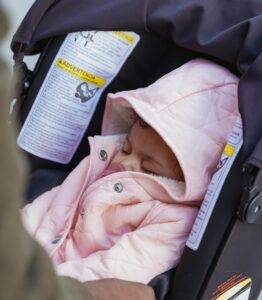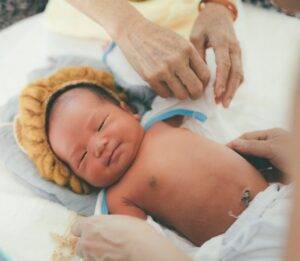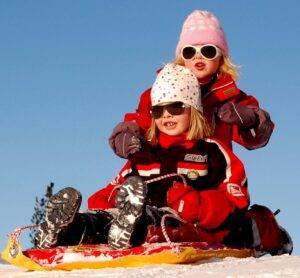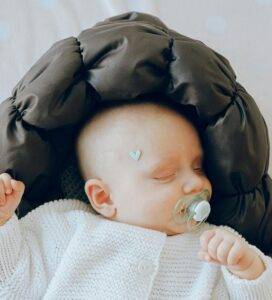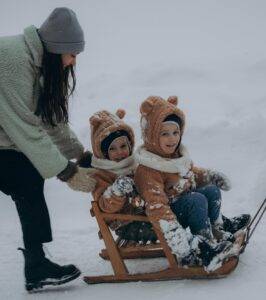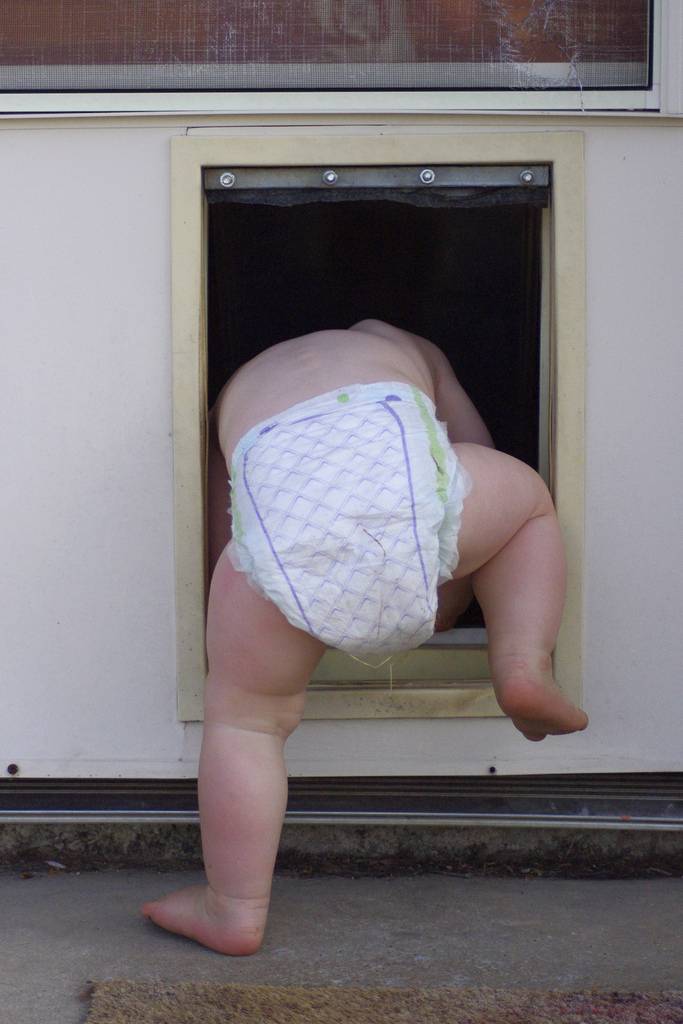Winter is a magical time of year, especially for kids. From the snowball fights and building snowmen to sledding and ice skating. However, winter also brings with it a set of unique challenges and hazards. As a parent, take the necessary precautions to ensure your kids stay safe and warm while enjoying the winter wonderland.
This blog post will cover essential winter safety tips for kids, keeping your little ones protected during the cold months.
Why Winter Safety for Kids Is Crucial
Winter safety for kids is essential because cold weather poses serious risks, including frostbite, hypothermia, and increased susceptibility to illnesses like the flu. Children are vulnerable because they lose body heat more quickly than adults and may not recognize when they’re too cold.
Also, winter sports and outdoor activities lead to injuries if proper precautions aren’t taken. By understanding the potential dangers and how to prevent them, you can ensure your kids enjoy a safe and healthy winter.
Dressing for Winter: Layering Up to Stay Warm
One of the most important aspects of winter safety is ensuring your child is dressed appropriately for the cold weather. Proper clothing prevents frostbite, hypothermia, and other cold-related issues.
- Start with a base layer: The first layer of clothing should wick moisture away from the skin, such as thermal underwear or a long-sleeve shirt made of synthetic materials or wool. Avoid cotton, as it retains moisture and makes your child feel colder.
- Add an insulating layer: The next layer should provide warmth. Fleece or down materials are excellent options. This layer should be snug but not too tight, as air trapped between layers helps with insulation.
- Finish with a waterproof outer layer: The final layer should be a waterproof and windproof jacket. This protects your child from the elements like snow, rain, and wind. It should be long enough to cover their lower back and fit well around the wrists and neck to keep cold air out.
- Accessories: Hats, gloves, scarves, and waterproof boots are essential. Body heat is lost through the head, so a well-fitted hat is crucial. Mittens are warmer than gloves because fingers share warmth. Also, ensure boots are insulated and waterproof to keep little feet warm and dry.
Protecting Your Child’s Skin: Preventing Frostbite and Dry Skin
Winter safety is being mindful of the effects of cold air, especially on young kids. Cold, dry air takes a toll on your child’s skin, leading to dryness, chapping, and in severe cases, frostbite.
How to Prevent Frostbite in Kids
- Limit exposure to extreme cold: If the temperature or wind chill is dangerously low, it’s best to keep your child indoors. Frostbite occurs quickly, especially on exposed skin like the cheeks, ears, and nose.
- Check for signs of frostbite: Early signs include redness, tingling, or numbness in the skin. Bring your child indoors immediately and top the affected areas with warm (not hot) water. Never rub frostbitten skin, as it causes further damage.
- Use skin protection: Apply a thick moisturizer to your child’s face and hands before they go outdoors. Use products that contain lanolin or petroleum jelly, creating a barrier against the cold.
Treating Dry Winter Skin
- Use a humidifier: Indoor heating dries the air, which in turn, dries the skin. A humidifier in your child’s bedroom adds moisture to the air, preventing dry skin.
- Moisturize regularly: Apply moisturizer to lock in moisture after baths. Choose creams or ointments rather than lotions, as they’re more effective in sealing moisture in the skin.
- Limit bath time: While a warm bath is soothing, long baths in hot water strip the skin of its natural oils. Keep baths short and use lukewarm water instead of hot.
Keeping Kids Safe During Winter Sports and Activities
Winter sports and outdoor activities are great ways for kids to stay active but come with risks. Whether your child is sledding, ice skating, or skiing, always prioritize safety
Sledding Safety Tips
- Choose the right location: The area is free of obstacles like trees, fences, or rocks. The hill should have a gentle slope and a flat area at the bottom for a safe stop.
- Supervise younger children: Always supervise younger kids while they sled to ensure they follow safety guidelines.
- Wear a helmet: Head injuries can happen, so have your child wear a helmet, especially younger kids. A bike helmet works well, a good alternative to a snow helmet.
- Sled feet first: Encourage your child to sled downhill with feet first rather than head first. This position is safer and reduces the risk of head and neck injuries.
- Avoid overcrowding on the sled: Only allow one or two children on a sled at a time, depending on its size. Overcrowding increases the risk of losing control or falling off.
Ice Skating Safety Tips
- Wear proper skates: Your child should wear ice skates that fit properly. Skates that are too loose or too tight cause blisters and make it harder to balance.
- Use safety gear: A helmet, kneepads, and elbow pads protect your child from injuries if they fall on the ice.
- Skate in designated areas: Your child should skate only in rinks or designated areas where the ice is regularly checked for thickness and safety. Don’t allow them to skate on frozen ponds or lakes unless these have been officially deemed safe.
- Teach proper falling techniques: Teach your child how to fall correctly to minimize injuries. Falling to the side or sliding on their knees is better than falling forward or backward, which could result in severe injuries.
Skiing and Snowboarding Safety Tips
- Take lessons: If your child is new to skiing or snowboarding, enroll them in lessons. Learning the basics from a professional greatly reduces the risk of injury.
- Wear appropriate gear: Your child should wear a proper-fitting helmet, goggles, and layers of warm clothing while allowing freedom of movement. Wrist guards are also recommended for snowboarding to protect against falls.
- Stay on appropriate slopes: Your child should stick to slopes that match their skill level. Beginner slopes are less steep, ideal for those who are still learning.
- Follow the rules: Teach your child the importance of obeying signs and staying within designated boundaries on the slopes. Going off-trail is dangerous due to hidden obstacles like rocks or trees.
Preventing Illnesses: How to Keep Your Child Healthy in Winter
Winter is also flu season, and the cold weather weakens your child’s immune system, making them more susceptible to illnesses. Here are some winter safety tips to keep your child healthy during the cold months.
How to Prevent Colds and the Flu
- Encourage frequent handwashing: Teach your child to wash their hands regularly with soap and water, especially before eating and after playing outdoors. This simple practice is one of the most effective ways to prevent the spread of germs.
- Get the flu shot: The flu vaccine is the best protection. Your child should have received their flu shot at the beginning of the flu season, typically in the fall.
- Boost the immune system: A healthy diet of fruits, vegetables, and whole grains helps strengthen their immune system. They get enough sleep and stay hydrated.
- Keep sick children at home: If your child shows symptoms of a cold or flu, such as a fever, cough, or sore throat, keep them home from school and other activities to prevent spreading the illness to others.
Managing Asthma in Winter
Cold air triggers asthma symptoms in children who have the condition. If your child has asthma, take extra precautions during winter.
- Use a scarf or mask: Your child should wear a scarf or a cold-weather mask over their mouth and nose when outside. This helps warm the air before it enters their lungs, reducing the risk of an asthma attack.
- Monitor indoor air quality: Since children spend more time indoors during winter, keep the air clean. Avoid using fireplaces or wood-burning stoves, which irritate the lungs. Your home should be well-ventilated.
- Follow the asthma action plan: Your child should continue their asthma medication as prescribed. Keep rescue inhalers handy, and monitor for worsening asthma symptoms.
Winter Car Safety: Protecting Your Child During Travel
Winter travel is challenging, with icy roads and poor visibility increasing the risk of accidents. Here are some tips to keep your child safe while traveling in winter.
Car Seat Safety in Winter
- Avoid bulky clothing: Although it’s tempting to bundle your child in a thick coat before placing them in a car seat, bulky clothing prevents the car seat harness from fitting properly. Instead, dress your child in thin layers and use a blanket over the harness to keep them warm.
- Check car seat installation: The car seat is properly installed and the harness should be snug. You should not be able to pinch any fabric at the shoulder. If the harness is loose, your child is at risk during a collision.
Winter Driving Safety Tips
- Prepare your vehicle: Before winter sets in, ensure your car is in good working order. Check the tires, brakes, battery, and windshield wipers. Keep an emergency kit in your car, including blankets, snacks, water, a flashlight, and a first-aid kit.
- Drive cautiously: When driving in winter conditions, reduce your speed, increase your following distance, and be cautious on bridges and overpasses, which freeze faster than other areas.
- Stay informed: Check the weather forecast and road conditions before heading out. Postpone your trip until conditions improve if a winter storm is expected.
Indoor Winter Safety: Keeping Your Home Safe and Cozy
While much of the focus is on outdoor safety, your home must be a haven during winter. Here are some tips to keep your indoor environment safe and warm.
Fireplace and Heater Safety
- Use space heaters safely: Keep these devices at least three feet away from anything flammable, such as curtains or furniture. Never leave a space heater unattended, and turn it off before bed.
- Maintain your fireplace: Inspect and clean the fireplace annually to prevent chimney fires. Use a screen to catch sparks and never leave a fire unattended.
- Install carbon monoxide detectors: Carbon monoxide is a deadly colorless and odorless gas. Have carbon monoxide detectors in your home, especially near sleeping areas.
Preventing Slips and Falls Indoors
- Keep entryways dry: Snow and ice can be trapped indoors, or dragged by your outside footwear, making floors slippery. Place door mats and use rugs with non-slip backings to prevent slips and falls.
- Clear pathways: Hallways and stairs should be clutter-free, preventing slips and falls. A clear pathway enhances visibility, preventing unwanted accidents.
How to Prepare for Winter Emergencies
Even with the best preparations, winter emergencies can happen. Being ready for these situations makes a difference in keeping your family safe.
Emergency Kit Essentials
- Stock up on supplies: Prepare an emergency kit with enough supplies to last for at least three days. Include non-perishable food, water, a manual can opener, flashlights, batteries, a first-aid kit, and necessary medications.
- Have a backup heat source: In case of a power outage, have a safe backup heating source, such as a generator or a wood stove. Never use a gas stove or oven to heat your home, as this leads to carbon monoxide poisoning.
- Stay connected: Keep a battery-powered radio on hand to stay informed about weather updates and emergency instructions. Ensure your phone is charged, and have a car charger available as a backup.
Educate Your Kids
- Teach them emergency contacts: Your child should know how to reach you in case of an emergency. Teach them your phone number, and also trusted relatives or friends.
- Practice emergency drills: Regularly practice emergency drills with your family, including what to do in case of a fire, severe storm, or power outage. Knowing what to do reduces panic in an actual emergency.
Enjoy a Safe Winter with Your Little Ones
Winter is a wonderful time filled with fun activities and precious family moments. Taking these winter safety tips to heart ensures your kids stay safe, warm, and healthy throughout the season. A little preparation goes a long way in preventing accidents and illnesses, allowing your family to enjoy everything winter offers.
For more tips on keeping your children safe and healthy, check out these resources on Omegapediatrics.com. With precautions, the whole family looks forward to a fun and safe winter season.
- Safety Tips for Children Celebrating the New Year 2025
- Understanding Why Newborn Baby is Red: A Complete Guide for Baby’s Comfort

